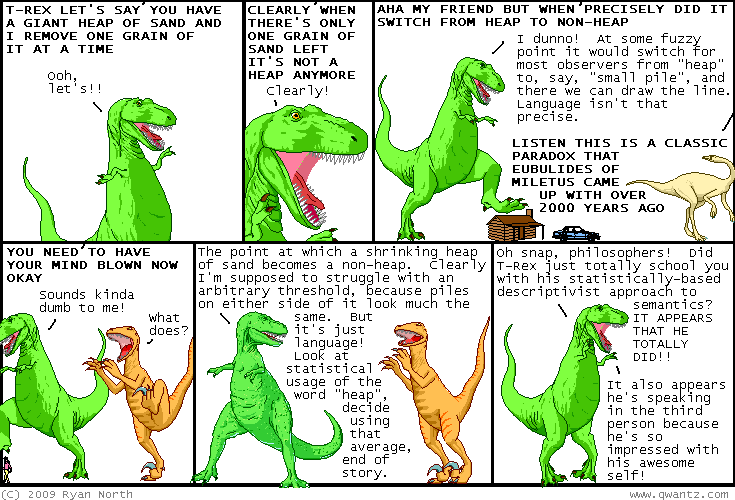Alternate title: I know it’s time to get out of the house when I start exercising my license to practice linguistics.
The mainstream media and people who are not internet-savvy have radically different uses of the verbs log in, log on, click on, download and upload.
The common, internet-savvy definitions for log in/on and click on are:
log in, log on: to identify yourself and gain access to a resource on a computer by providing authenticating information.
click on: to press the mouse button down and then release it, while the mouse pointer is over a visible link, menu item, or icon or other resource on the computer screen.
The non-internet-savvy use appears to simply be shorthand for the verb go or visit. For example, an announcer on the evening news might say:
For more details on this story, log on to our website at www….
No identifying information is needed to allow access to the news’ website; the intended meaning is simply to visit. The particle constructions click on and click on to also are occasionally also used with this same intended meaning:
For more details on this story, click on to our website at www….
For more details on this story, click on our website at www….
The news announcer wouldn’t be reading out the website address unless the listener needed to type it in first. Since the address isn’t going to be visible on the listener’s screen until they type it in, there’s nothing to click on. And once the listener is finished typing it in, they’ll be automatically taken to the site when they push enter. And in no modern browser is the website address ever clickable. So this usage of click on has the meaning of go or visit as well.
The internet-savvy uses of download and upload are deictic, like the verbs send and recieve, or come and go. That is, their meaning is dependent on the location of the agent performing the action:
download: to cause electronic data, files, or other information to move towards the agent, generally over a network.
upload: to cause electronic data, files, or other information to move away from the agent, generally over a network.
For example, consider two people, Alice and Bob. Alice is working from home and Bob is at the office. If Alice is going to transfer a file from her computer at home to a computer at office, where Bob is, they would both use upload, because the data is moving away from the agent, Alice:
Bob: Can you upload today’s TPS reports?
Alice: Sure. I’ll let you know when they’re done uploading.
Download in place of upload would mean that the TPS reports were on the computer at the office, and Alice was transferring them to her computer at home:
Bob: Can you download today’s TPS reports?
Alice: Sure. I’ll let you know when they’re done downloading.
Similarly, if Bob were the one initiating the action of obtaining the information from Alice’s computer, he would use download, and if he were sending the information to Alice’s computer, he would use upload.
The non-internet-savvy usage of download simply means transfer. It has no deictic component and encompasses the net-savvy meaning of upload and download, as well as that of simple copying:
Once this file is finished downloading to my Hotmail I’ll download it to you in an email.
I downloaded the photos from the CD to my computer and now they won’t load.
Unsurprisingly, upload does not seem to be present in the non-internet-savvy dialect; possibly because download encompasses its meaning entirely.
Although there are probably more differently-used terms, these four usage differences are more than enough for internet-savvy speakers to identify non-internet-savvy speakers. Generally the internet-savvy speakers then make the same kind of assumptions that adults make about children who mimic and misuse words they’ve just learned — specifically, that the speaker has no idea what the words he or she is using actually mean, and therefore no idea what he or she is talking about.
Sounding internet-savvy is easy; then, even if you’re not. Use visit instead of log in/log on when the user doesn’t actually have to identify themselves to use a website or other resource. Don’t use click on unless there’s actually something to click on. And think about where the data is going and who’s making it go there before choosing between upload and download. Before you know it, people will start asking you for help debugging their IPv6 firewall rules and recompiling their embedded Linux kernels.

